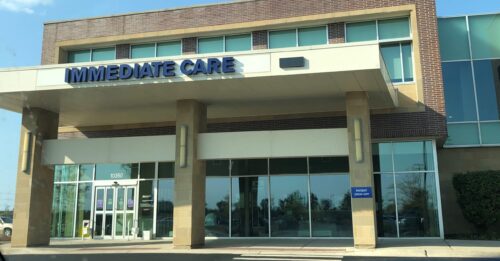Putting COPS into context
NFPA 70: National Electrical Code Article 708: Critical Operations Power Systems (COPS) introduced electrical standards for facilities that support critical functions in response to vulnerabilities from natural and human-initiated disasters. However, these standards are less than straightforward and seemingly contradictory with other codes. It’s time to put COPS into context.
Learning objectives
- Be aware of the definitions associated with critical operations power systems (COPS).
- Understand specific requirements for COPS installation
- Explain the differences between emergency systems and COPS, and the nuances thereof.
Article 708: Critical Operations Power Systems (COPS) first appeared in the 2008 edition of NFPA 70: National Electrical Code (NEC). At that time, recent events in the U.S. had highlighted vulnerabilities of critical systems and functions to natural and human-initiated disasters. Article 708 was developed to establish effective electrical standards for facilities that support critical functions, to ensure the continuity of essential services and to maintain the ability to recover from disastrous events (see Figure 1).
Definitions
Article 708 introduced three new acronyms to the NEC. As one would expect for an electrical code, terms are defined by their electrical, rather than functional, characteristics in 708.2:
Documentation requirements
NEC Article 708 describes a number of documentation requirements including a risk assessment, a hazard-mitigation strategy, and maintenance and testing records. These elements won’t be addressed here, as readers of this article are likely to be primarily concerned with COPS installation requirements, particularly for the emergency power supply system as defined in NFPA 110: Standard for Emergency and Standby Power Systems.
Standby power
NEC Article 708 permits storage batteries, uninterruptible power supplies (UPSs), and fuel cell systems as alternate sources for COPS. These systems are uneconomical and unwieldy for all but a minority of COPS applications. Typically, the project characteristics will strongly push the alternate source selection toward generators. Generator requirements in Article 708 will largely be familiar to designers of emergency systems and health care facilities, as they generally echo similar requirements from other articles that cover those systems. Emergency, health care, and critical operations power systems face similar challenges: They must be robust and reliable, and their components must be resistant to detrimental changes when not in operation. At the same time, their operational environments are different: Emergency systems need to operate only for a limited time to protect occupants while health care systems must operate longer to protect patients, and COPS must operate for long periods to protect the interests and safety of persons outside their facilities. Below, some of the requirements for COPS generating systems are compared to requirements for emergency systems as defined in NEC Article 700, legally required standby systems as defined in NEC Article 701, and health care facilities as described in NEC Article 517 and NFPA 99. References are from these codes:
References appearing as paragraph descriptors only are from the NEC. References from other codes will be preceded by the NFPA designation of the code.
• NEC Article 708.22(B) permits the COPS alternate source to serve additional load types—including emergency, legally required standby, and optional loads—if it has adequate capacity for all the loads or has automatic load-shed and pickup functions to selectively drop lower-priority loads if the system approaches overload. COPS and emergency circuits have the highest priority—without differentiation—followed by legally required standby loads and, finally, optional loads.
NEC Article 700.4(B) echoes this requirement almost exactly, using substantially identical language. NEC Article 701.4 has a similar requirement, permitting the system that serves legally required standby to serve optional loads as well, with load shedding. NEC Article 517.30(B)(3) and NFPA 99, Chapter 6.4.1.1.8.3 both require a predictive scheme to inhibit connection of optional loads that will overload the generating system, and automatic shedding of those loads to avoid overload, but do not otherwise describe load-shedding requirements. NFPA 110, Chapter 7.1.5 describes similar requirements with the exception that load priorities are Level 1, Level 2, and optional loads, in that order, where Level 1 loads are those whose loss could result in serious injury or death.
NEC Articles 700.5(A), (B), and (C); and 701.5(A), (B), and (C), have nearly identical requirements, using substantially the same language. NEC Article 517.25(B)(2) describes general requirements for transfer switches, citing "reliability, design, and load considerations," and references NFPA 110. NFPA 99, Chapters 6.4.2.1.4, 6.4.2.1.5.2, and 6.4.2.1.8 together describe similar requirements, along with a more extensive list of automatic transfer switch installation requirements and performance criteria. NFPA 110 devotes an entire chapter to automatic transfer switch requirements, of which Chapters 6.1.6 and 6.2.3 describe requirements similar to those for COPS switches.
NEC Articles 700 and 701 also require that power must be available within the time required by the application, but also impose additional requirements. NEC Article 700.12 requires power to emergency lighting and power within 10 seconds of a normal supply outage, and Article 701.12 requires power within 60 seconds. NFPA 99, Chapter 6.4.3.1 calls for service to the life safety and critical branches within 10 seconds. Paragraph 6.4.1.1.6.1 declares that Type 1 essential electrical systems, as defined in NFPA 99, must be classified as Type 10 generator sets as defined in NFPA 110—another requirement for 10-second availability. NFPA 110 doesn’t define a particular pickup time. Instead, Chapter 5.4 requires that the system has capacity to pick up and carry the load in accordance with its NFPA 110 type, as described in Table 4.1(b).
• Transfer equipment serving COPS loads must not serve any non-COPS loads, as per NEC Article 708.24(D).
NEC Article 700.5(D) describes a similar prohibition against serving nonemergency loads from an emergency system transfer switch. NEC Article 701 does not contain such a restriction. A similar requirement is implicit in Article 517.32, in which the loads to be connected to the life safety branch are prescriptively described: Only the listed loads may be served from the life safety branch. NEC Article 517.33 describes the critical branch similarly, though in more permissive terms. NFPA 99, Paragraphs 6.4.2.2.3 and 6.4.2.2.4 describe very similar rules. No such requirement appears in NFPA 110.
Wiring and installation
Most of the COPS installation requirements will be familiar to designers of emergency systems and health care systems. COPS feeders require separation from other systems, protection from physical damage, and protection from fire (see Figure 2). Those requirements can be found in NEC Article 708.10(C). Fire protection requirements are more explicit than those for emergency systems, as described in NEC Article 700.10(D)(1). Emergency feeders installed in fully sprinklered spaces or areas do not require additional fire protection. COPS circuits, however, either must be inside a fire-resistant enclosure or be a listed electrical circuit protective system.
The meaning of "spaces or areas" in the context of NEC Article 700.10(D)(1) is not entirely clear. Previous editions of the NEC have considered emergency feeders installed in fully sprinklered buildings to be adequately protected. The NEC Handbook, in recent editions, has alternately interpreted spaces or areas to exclude spaces above ceilings, to include those spaces, and then to exclude those spaces again in the 2014 edition, calling for direct fire protection of feeders installed above ceilings. While the NEC Handbook is not code, its contents have significant influence on how the provisions of the NEC are enforced. For health care applications, the difference between fire protection requirements for emergency feeders may be more of academic than practical interest. NFPA 99 and NEC Article 517 apply the requirements of Article 700 to the life safety branch. However, NFPA 99, Paragraph 6.4.2.2.1.6 explicitly exempts the life safety branch from the feeder fire protection requirements of NEC Article 700.
COPS branch circuits installed outside the DCOA also must be protected from physical damage and fire, while branch circuits within the DCOA can be installed with traditional wiring methods, as described in NEC Article 708.10(D). COPS feeder distribution equipment including transfer switches, panels, and transformers must be installed in spaces with a 2-hour fire-resistance rating. NEC Article 700.10(D)(2) has a similar requirement, but permits emergency feeder distribution in spaces protected by fire suppression systems as an alternative. NFPA 99, Paragraph 6.4.2.2.1.6 exempts the life safety branch from compliance with this requirement.
COPS feeder distribution equipment also must be installed above the 100-year flood plain. NEC Article 700 requires consideration of flood hazards, but does not make any specific requirements for the installation based on flood probability, predictions, or historical flood records (see Figure 3). The elevation of the 100-year flood plain is not static in the long term. It moves up and down, and in urban areas, it generally moves up as construction replaces porous surfaces with more impervious paved and landscaped areas. It is not clear what remediation may be required as future maps are redrawn to show the elevation of COPS feeder distribution equipment below the 100-year plain.
When feeders themselves are installed below the 100-year flood plain, the installation must be treated as a wet location by using conductors with insulation listed for wet locations and wiring methods permitted for wet location installations, according to NEC Article 708.10(C)(3).
A hypothetical COPS
Figure 4 shows an abbreviated one-line diagram for a hypothetical facility with a COPS component, along with emergency loads and legally required standby loads. Some detail is necessarily omitted from the drawing to maintain legibility. COPS circuits and equipment are identified with the acronym "COPS" in their names, emergency with "EM," and legally required standby with "LRS." Circuits downstream from switch SW COPS must be separated from all other circuits, as must circuits downstream from SW EM. Legally required standby circuits, served from SW LRS, may be run in raceways and other enclosures with normal power circuits. Ground fault protection is provided by long-time, short-time, instantaneous, and ground fault (LSIG) breakers in the normal service panel, in accordance with the requirement for a second level of ground fault where one level is provided. COPS, emergency, and legally required standby circuits do not have ground fault protection, but they do have ground fault alarms.
The NEC spectrum
NEC requirements for COPS are generally similar to requirements for other robust standby power systems: emergency, legally required standby, and health care systems. And, in many particulars, those requirements differ. Emergency systems stand at one end of the spectrum; they’re built for speed and they finish their runs in a couple of hours. COPS are at the other end, built for endurance and with some of the most rigorous requirements in the NEC.
Tom Divine is a senior electrical engineer and project manager at Smith Seckman Reid Inc. He is a frequent contributor to Consulting-Specifying Engineer magazine and Pure Power and is often a speaker at Consulting-Specifying Engineer webcasts.
Do you have experience and expertise with the topics mentioned in this content? You should consider contributing to our CFE Media editorial team and getting the recognition you and your company deserve. Click here to start this process.



